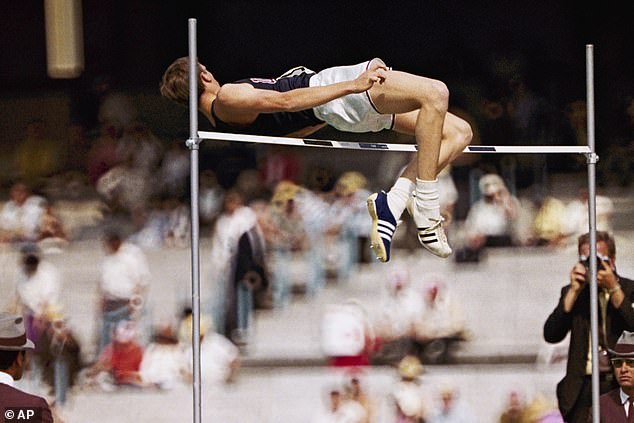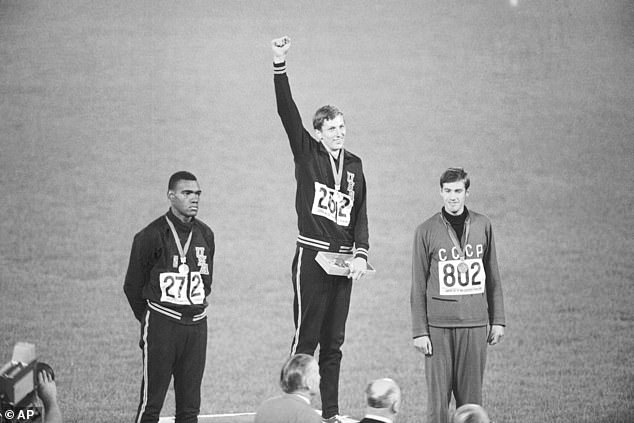- Is there a question you want to know the answer to? Or do you know the answer to any question here?
- Write to: Charles Legge, Answers to Correspondents, Daily Mail, 9 Derry Street, London W8 5HY; or email charles.legge@dailymail.co.uk
QUESTION: Has there been any innovation in sport that has been as revolutionary as the Fosbury Flop in the high jump?
I would like to highlight the introduction of the fibreglass pole for pole vaulting in the 1950s. Before that, poles were rigid and made of wood or aluminium.
Elite vaulters began switching to fiberglass after Herb Jenks introduced his Browning Sky pole in the early 1960s. Jenks’s pole was sturdier than earlier fiberglass poles, which were prone to breaking.
Once it was discovered that the flexibility of the new poles meant that backswinging could help propel the vaulter over the bar, it became apparent that a new technique was needed.
Since then, fiberglass poles have evolved into the sophisticated models we use today.
Sweden’s Armand Duplantis competes in the men’s pole vault during the World Athletics Diamond League

Dick Fosbury of the United States breaks the barrier in the high jump competition at the 1968 Mexico City Olympics

Gold medal winner Dick Fosbury raises his arm on the podium at the Olympic stadium in 1968.
In 1960, the world record for pole vaulting was 4.8 metres, whereas today it is 6.26 metres. In comparison, the high jump in 1960 was 2.2 metres, whereas today it is only 2.45 metres. So, it could be said that the invention of the fibreglass pole had a much greater impact than the Fosbury Flop pole, first used by Dick Fosbury in 1968.
Cecil Lowry, Stockport
QUESTION: When and why did the white flag become a sign of surrender?
The white flag was formalized in international law as a sign of surrender, truce, or negotiation in conflict during the Hague Convention of 1899.
It was a practical choice for its simplicity and visibility in battle. White stands out against chaotic backgrounds and is devoid of offensive symbolism, making it understandable across cultures and armies.
The white flag has been used throughout history. The Roman historian Livy wrote that during the Second Punic War (218-201 BC), the Carthaginians signaled their desire for peace with “bands of white wool and olive branches.”
Its use became widespread from the Middle Ages onwards. In 1578, the English sailor George Best, who was searching for the Northwest Passage, described his encounter with the Inuit people, who expressed their peaceful intentions with “a white flag made of bladders sewn together with the guts and tendons of animals.”
Colin Hay, Cromer, Norfolk
QUESTION: Was Sean Connery’s role as Zed in Zardoz the strangest example of film casting ever?
In addition to the above answers, what about Keanu Reeves’ portrayal of Jonathan Harker in a 1992 adaptation of Bram Stoker’s Dracula?
Denise Richards, in her role as a nuclear physicist named Christmas Jones in the James Bond film The World Is Not Enough, stretched the imagination even further.
Annie Forbes, Brighton
(tags to translate)dailymail


